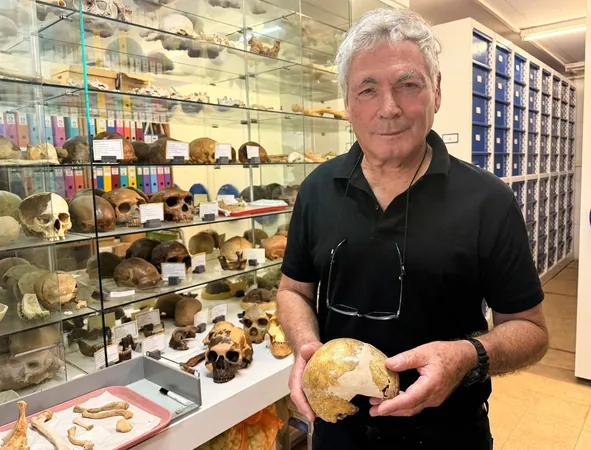
Ancient Child's Bones Hint at Earlier Interbreeding with Neanderthals
2025-08-21
Author: Jacob
Revolutionary Findings from Underground Bones
In a groundbreaking revelation, researchers have unveiled that modern humans and Neanderthals may have mingled and interacted a whopping 100,000 years earlier than previously believed! This eye-opening discovery comes from the examination of a child's bones found in Israel, which suggests interbreeding between these two fascinating groups.
The Ancient Discovery
Excavated from Skhul Cave in 1931, the remains of this ancient child were originally thought to belong to a unique species separate from Homo sapiens and Neanderthals. However, thanks to advanced CT scans and 3D mapping technologies, scientists have delved deeper into the skeletal structure and revealed that the child bore traits characteristic of both human groups. This child was buried around 140,000 years ago—an astonishing timeline!
A New Perspective on Human Relations
Lead researcher Israel Hershkovitz, a professor at Tel Aviv University, argued that their findings point to an extensive relationship between Homo sapiens and Neanderthals as early as 140,000 years ago. Contrary to previous beliefs that these encounters were hostile, evidence suggests that these early humans coexisted peacefully, sharing cultural practices and even burial rituals.
The Science Behind the Discovery
Although the absence of ancient DNA from the child’s remains complicates definitive conclusions, microscopic features observed in the bone structure provide compelling support for the hybrid hypothesis. The intricate 3D models created from thousands of scans revealed distinct internal characteristics that significantly differ from those of pure Homo sapiens or Neanderthals.
Unanswered Questions and Future Research
While the advanced mapping has provided clearer insights, it has also raised further questions. Were the child’s parents products of interbreeding? What led to the choice of burial in the cave? As researchers continue to excavate this historical site, more discoveries about human origins and interactions may emerge.
A Gentle Perspective on Ancient Humans
In light of this new research, Hershkovitz emphasizes a more compassionate view of early Homo sapiens. Rather than being seen as aggressive conquerors, they exhibit traits of coexistence and cultural sharing. This challenges the long-held belief that our ancestors were solely responsible for the demise of Neanderthals, painting a picture of complex social dynamics instead.
The Significance of Skhul Cave
Skhul Cave is one of the oldest known burial sites, revealing evidence of intentional burials dating back over 100,000 years. Situated at a crossroads of early human migration, this region has become a crucial point of study in understanding not just our evolutionary past, but also the broader interactions between species.
As technology advances, archaeologists and scientists are presented with new opportunities to revisit age-old discoveries, unearthing insights that deepen our understanding of humanity itself.









 Brasil (PT)
Brasil (PT)
 Canada (EN)
Canada (EN)
 Chile (ES)
Chile (ES)
 Česko (CS)
Česko (CS)
 대한민국 (KO)
대한민국 (KO)
 España (ES)
España (ES)
 France (FR)
France (FR)
 Hong Kong (EN)
Hong Kong (EN)
 Italia (IT)
Italia (IT)
 日本 (JA)
日本 (JA)
 Magyarország (HU)
Magyarország (HU)
 Norge (NO)
Norge (NO)
 Polska (PL)
Polska (PL)
 Schweiz (DE)
Schweiz (DE)
 Singapore (EN)
Singapore (EN)
 Sverige (SV)
Sverige (SV)
 Suomi (FI)
Suomi (FI)
 Türkiye (TR)
Türkiye (TR)
 الإمارات العربية المتحدة (AR)
الإمارات العربية المتحدة (AR)